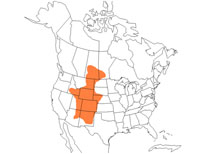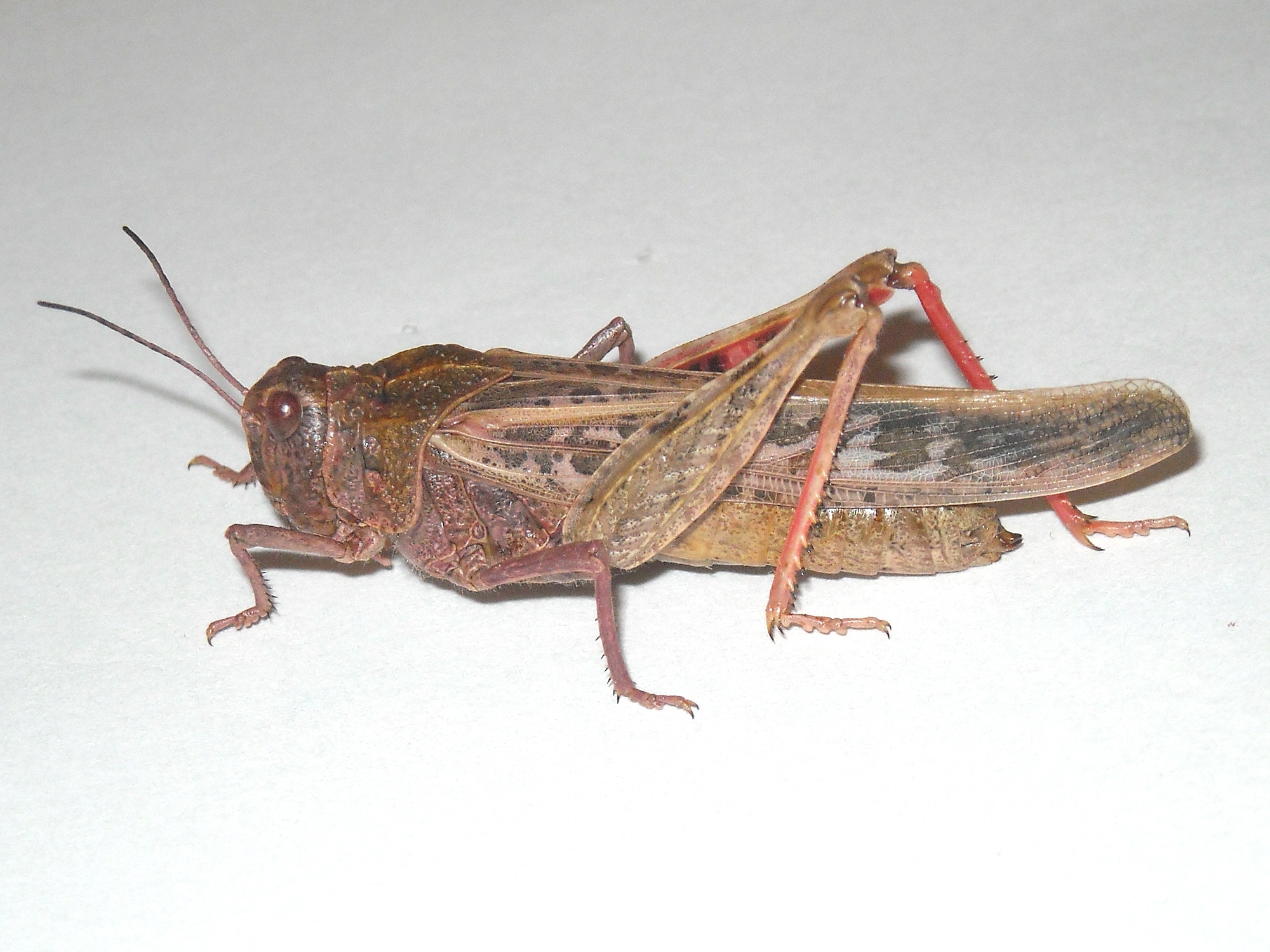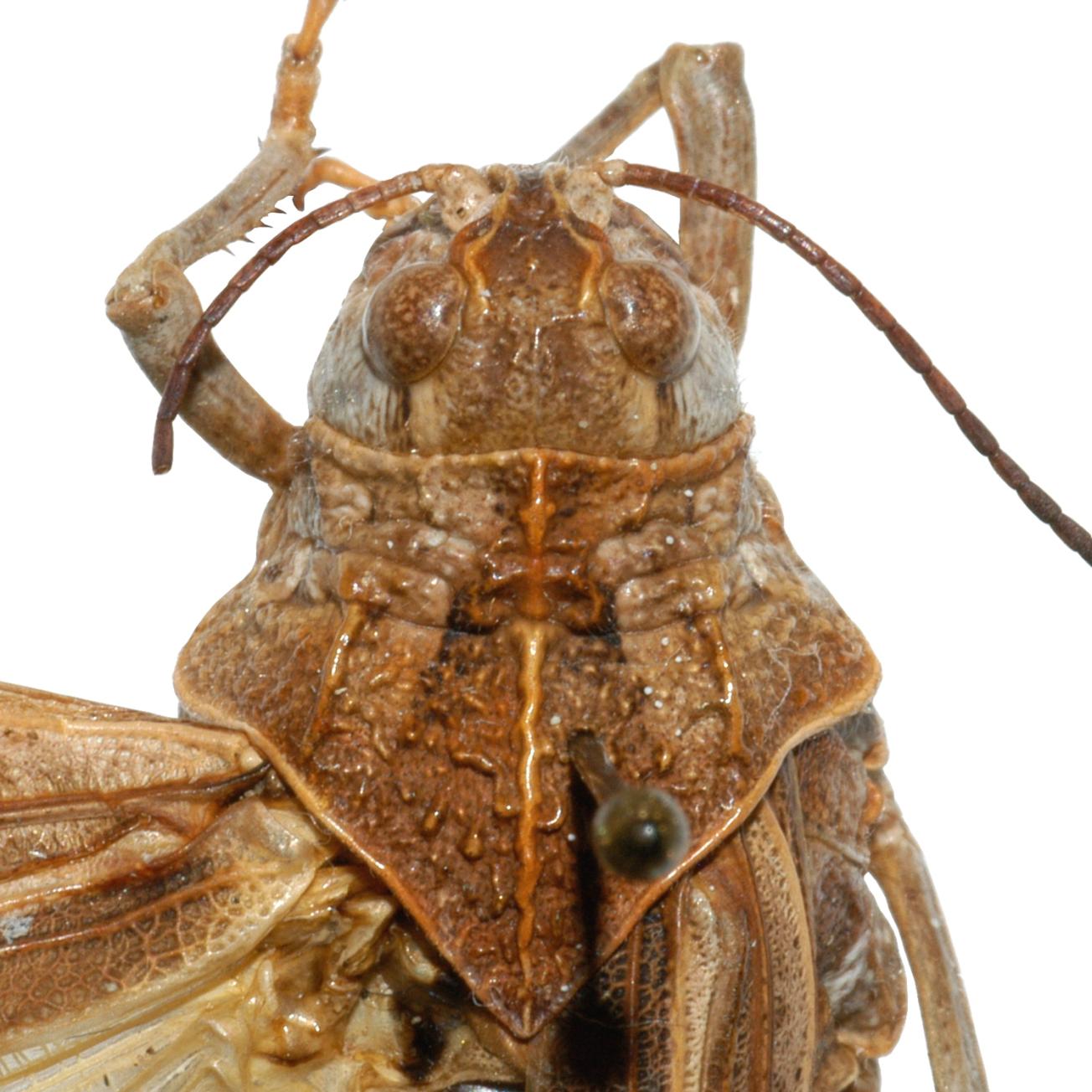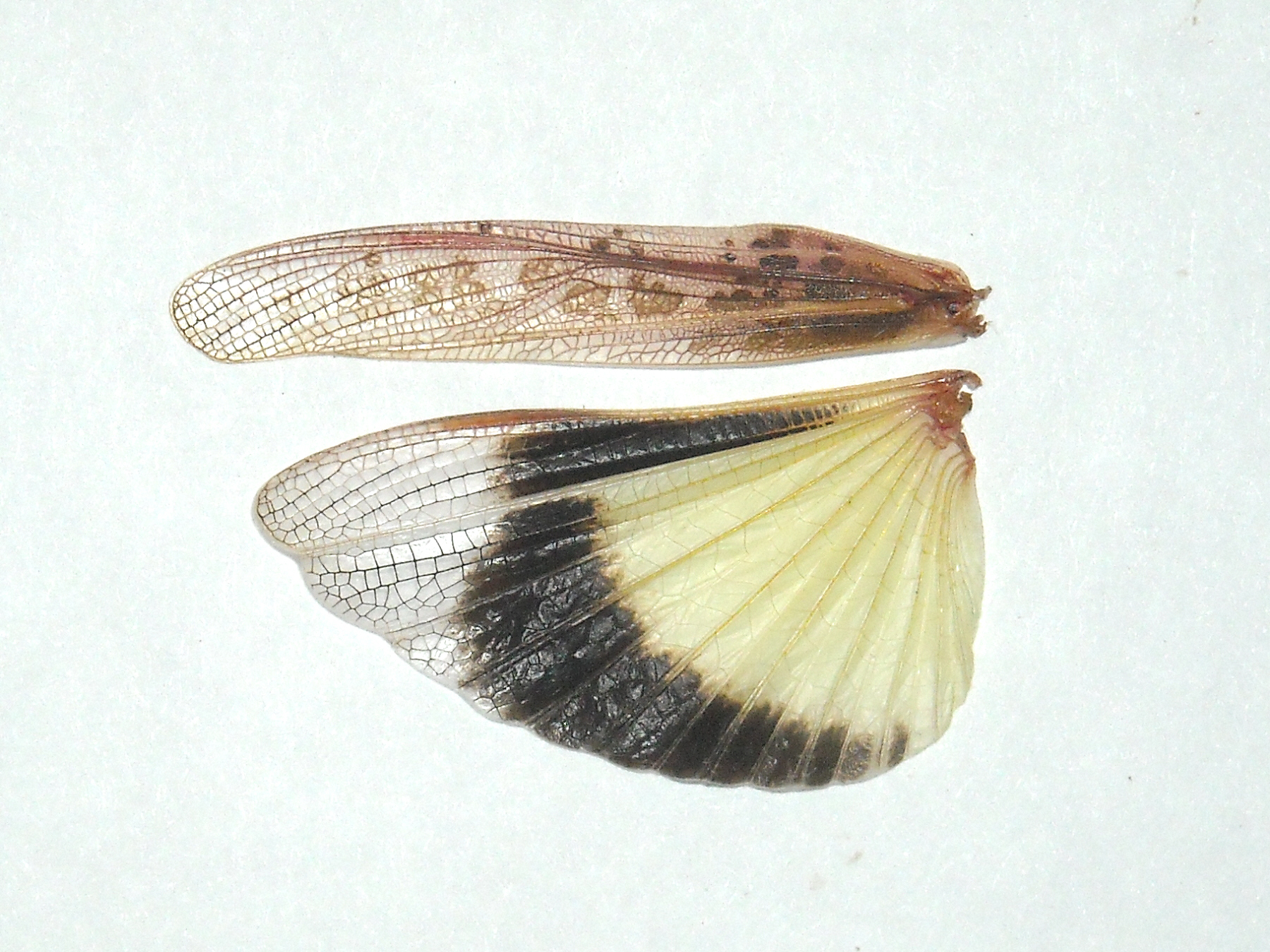Xanthippus montanus
|
Geographic range of Xanthippus montanus (Thomas) |
|
Fig. 1, adult male
|
|
Fig. 2, adult female
|
|
Fig. 3, inner view of hindleg
|
|
Fig. 4, dorsal pronotum
|
|
Fig. 5, forewing (tegmen) and hindwing
|
Species
Montana band-winged grasshopper
Xanthippus montanus (Thomas)
Subfamily Oedipodinae
Identification
Light brown in color with distinct sculpturing of the pronotum. Tegmina possess a small amount of spotting that becomes more evident basally. Hind wings yellow with a black band. Inner surface of the hind femur is red with a variable degree of black markings. Hind tibia also shades of red.
Could be confused with Xanthippus corallipes, but the spotting on the tegmina of X. montanus is not as bold and tend to be more sporadic. The inner hind femur of X. montanus it typically patterned with black, while it is usually solid red in X. corallipes. However, high elevation populations of X. corallipes may show some blackish on the inner hind femur. Xanthippus montanus does not occur at high elevations and is restricted to sparsely vegetated sandy areas.
Distribution and habitat
Xanthippus montanus ranges from southern New Mexico and Arizona north into Alberta and Saskatchewan, Canada. Found in sandy habitats including dunes, blowouts, and eroded/sparsely vegetated areas.
Economic importance
Not economically important.
Food preferences
Not known. Has been reared on grasses, but potentially feeds on forbs.
Dispersal and migration
Not known. Xanthippus montanus is a rare species. As it has powerful wings, it may be capable of long distance flight.
Hatching
Little is known.
Nymphal development
Variable, but nymphs are normally present from the middle of summer to early spring.
Adults and reproduction
Adults are present from April to August, but are most common from April through June.
Population ecology
Little is known due to the rarity of this species throughout its range. Observations in Nebraska suggest it undergoes fluctuations in abundance from year to year.
Daily activity
Unknown.
Source and date
University of Nebraska June 2011 by Sean Whipple & Mathew L. Brust
Selected references
Brust, M. L., W. W. Hoback, and R. J. Wright. 2008. The Grasshoppers (Orthoptera: Acrididae and Romaleidae) of Nebraska. University of Nebraska-Lincoln Extension. 138pp.
Capinera, J. L., R. D. Scott, and T. J. Walker. 2005. Field Guide to Grasshoppers, Katydids, and Crickets of the United States. Comstock Publishing Associates. 280pp.
Otte, D. 1984. The North American Grasshoppers, Volume II, Acrididae: Oedipodinae. Harvard University Press, Cambridge, MA. 366 pp.







